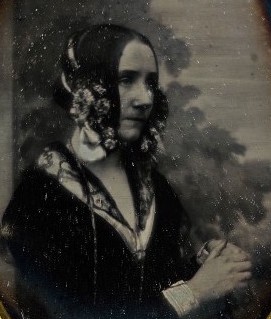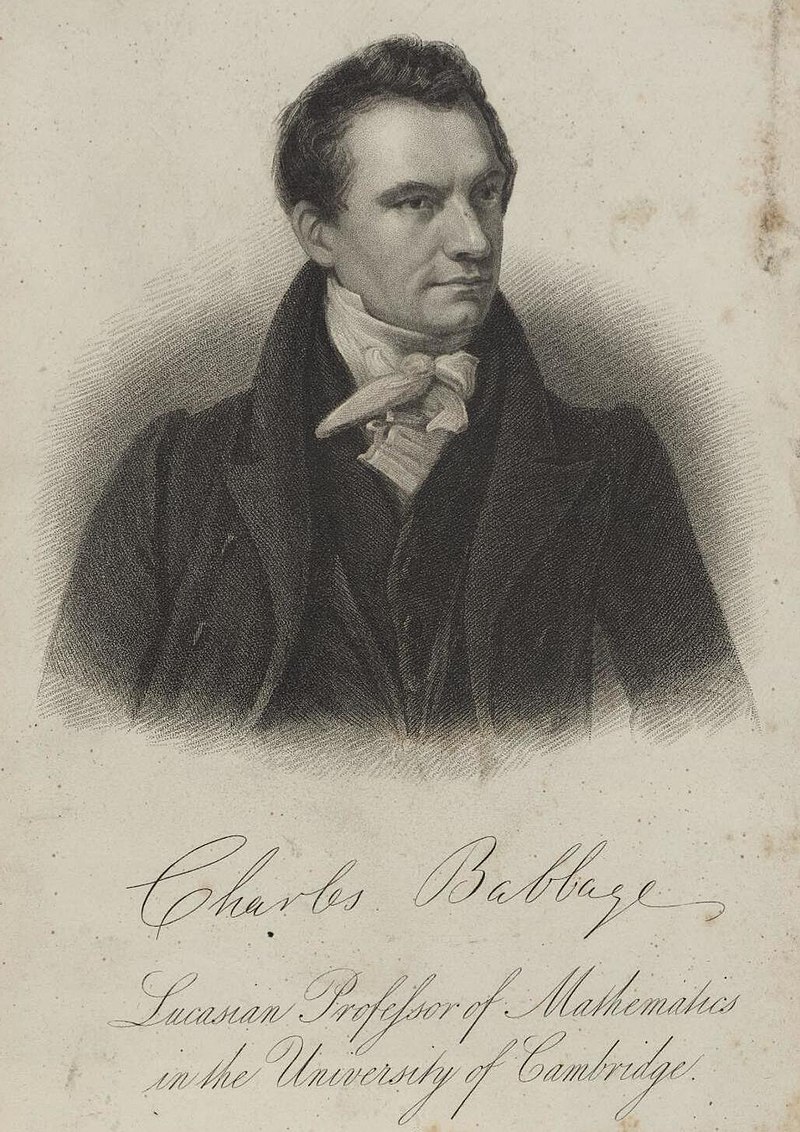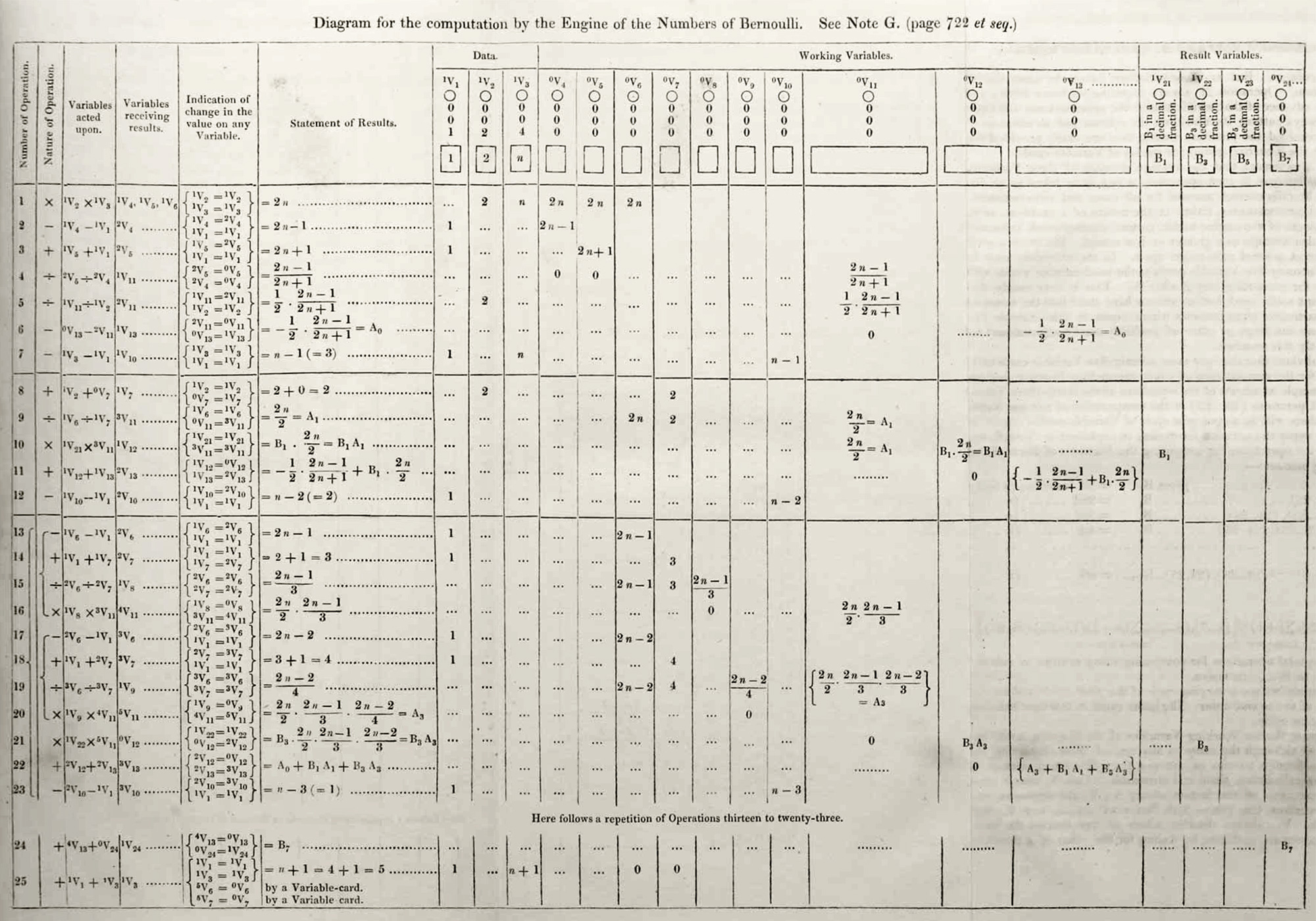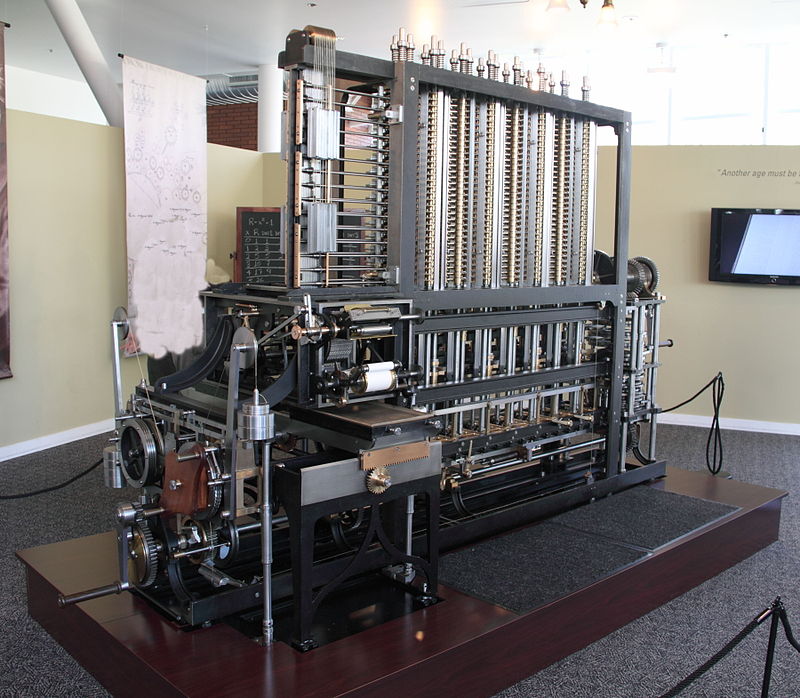1 Byron, Babbage, and Boole

The story of computers begins before the age of electricity even commenced; in a way that seems just too romantic and steampunk-y to be true. Ada Byron (1815-52) was the daughter of the British Romantic poet and aristocrat George Gordon Byron. Ada didn’t live with Lord Byron: he left Britain when she was four months old and never returned. Byron died when Ada was eight. Lady Byron, who believed her estranged husband was insane, pushed Ada toward mathematics and science to prevent her from turning out like Byron. When she was nineteen in 1835, Ada married an aristocrat named William King, who was also a scientist and a Fellow of the Royal Society. When King was made the first Earl of Lovelace in 1838, Ada became Countess Lovelace. But she was already well-known in scientific circles before becoming a Lady.
As a precocious teenager with social connections, Ada had access to British thinkers like Charles Dickens, physicist Michael Faraday, and mathematician Charles Babbage. Ada’s tutor was a the first female member of the Royal Astronomical Society, Mary Somerville, who introduced her to Babbage in 1833 when Ada was seventeen (Babbage had co-founded the Society in 1820).

Babbage was the Lucasian Professor of Mathematics at Cambridge (Isaac Newton and Stephen Hawking were other Lucasian Professors) from 1828 to 1839. He began ideas for a “Difference Engine” in the 1810s, after discovering that the French had improved their published tables of logarithms by breaking the calculations down into simple series of addition and subtraction, and assigning these arithmetic tasks to unskilled computers (people) who knew very little else. Babbage reasoned that machinery could be devised that could replace these human computers, and he spent a good part of the next few decades working on it.
Babbage built a prototype Difference Engine in 1822 and partnered with a manufacturing engineer to try to mass produce a machine. The collaboration ended in conflicts over expenses in 1831. By 1833 when he met Ada, Babbage was at work on a new machine called the Analytical Engine, which is generally considered the first general-purpose computer.

Like today’s computers, Babbage’s Analytical Engine was able to receive inputs of both program instructions and variable data in the form of punched cards. Babbage borrowed the idea of storing instructions and data on cards from Joseph Marie Jacquard (1752-1834), a French weaver who developed a “programmable loom” in 1804. The Jacquard loom read instructions from a series of punched cards and was able to reproduce complex patterns for expensive brocade, damask, and matelassé fabrics. Babbage’s Analytical Engine could not only read cards, but it could punch numerical results of calculations onto new cards. The machine also controlled a printer and a curve plotter.
A family friend told the story of Ada’s first glimpse of a working model of Babbage’s earlier Difference Engine. “While the rest of the party gazed at this beautiful instrument,” she said, “with the same sort of expression that some savages are said to have shown on first seeing a looking glass or hearing a gun, Miss Byron, young as she was, understood its working and saw the great beauty of the invention” (quoted in Rheingold, Tools for Thought, 31-2.).
In 1842, Italian statesman (later Prime Minister of Italy) and mathematician Luigi Menabrea published a description of the Analytical Engine after attending an 1840 lecture given by Babbage in Turin. Ada translated Menabrea’s Sketch of the Analytical Engine Invented by Charles Babbage from French to English, and added extensive notes of her own. Among her additions to Menabrea’s article was a technique for calculating Bernoulli numbers that is considered by many to be the world’s first complete computer program. In addition to developing the first complete computer algorithm, Ada explained the machine’s purpose to her British readers, saying “the Analytical Engine weaves algebraic patterns just as the Jacquard loom weaved flowers and leaves.” Babbage would later note, “She seems to understand it better than I do, and is far, far better at explaining it” (Rheingold, 32).

Ada’s interest in computation extended beyond the calculations that interested Babbage. She considered questions as speculative as artificial intelligence, but concluded “The Analytical Engine has no pretensions whatever to originate anything, It can do whatever we know how to order it to perform. It can follow analysis; but it has no power of anticipating any analytical relations or truths” (Alan Turing would later call this argument “Lady Lovelace’s Objection”). Even with these limitations, though, she believed computers could be designed to do extremely complex tasks. “Supposing, for instance,” she wrote, “that the fundamental relations of pitched sounds in the science of harmony and of musical composition were susceptible of such expression and adaptations, the engine might compose elaborate and scientific pieces of music of any degree of complexity or extent.” Ada Byron understood (as Babbage seemed not to) that letters, musical notes, colors, and many other symbols could be represented as numbers – and that all these sets of symbols could be manipulated by Analytical Engines. In a very real sense, she was the first person to see beyond the finely machined gears and levers of the physical machine and into the potential of the software that would run on it.
Some of the techniques Ada experimented with have become the familiar loops, subroutines, and conditional jumps that make up the foundation of modern programming languages. It’s interesting to speculate on what Ada Byron might have achieved, if she had not died of uterine cancer at the young age of thirty-six.

At the same time Ada Byron was translating and expanding Menabrea’s essay on Babbage, a self-taught math teacher named George Boole (born in the same year as Ada) published his first paper in the Cambridge Mathematical Journal. Boole received an award from the Royal Society in 1844 for an essay “On A General Method of Analysis”, and in 1847 Boole published The Mathematical Analysis of Logic. The symbolic logic Boole developed is called Boolean algebra; its variables are the values “true” and “false”, denoted by 1 and 0 respectively. Reducing logical propositions to binary choices enables the use of digital logic gates. This is the formal system by which things in the real world represented by symbols in language can be further abstracted into information that can be manipulated by a digital computer. Although for a long time Boole was considered a philosopher, in the 1930s an engineering student named Claude Shannon applied Boolean logic to telephone routing and electromechanical relays, creating the “switching algebra” that facilitates design of combinatorial logic circuits, laying the theoretical foundation for the information age.

The steampunk prehistory of digital computing is also notable in that several of the political ironies we now face seem to have their origins there too. The Jacquard loom, which inspired Babbage to use punched cards in his design for the Analytical Engine, was one of the main inspirations for the Luddite movement, which tried to break both the power of the industrialists introducing such machines and the machines themselves. Ada’s father, Lord Byron, was nearly unique in his aristocratic peer group, in his support of the machine breakers. Lord Byron gave a speech defending the Luddites in the House of Lords, during debate over the 1812 Frame Breaking Act which authorized the death penalty as a punishment for industrial sabotage, The act passed despite Byron’s objections, and in 1813 a number of Luddites were executed. Among them was a twelve-year old named Abraham Charlston. Byron wrote “Song For the Luddites”, comparing the machine breakers with the “Liberty lads o’er the sea” who had bought their freedom in the American Revolution with their blood.

